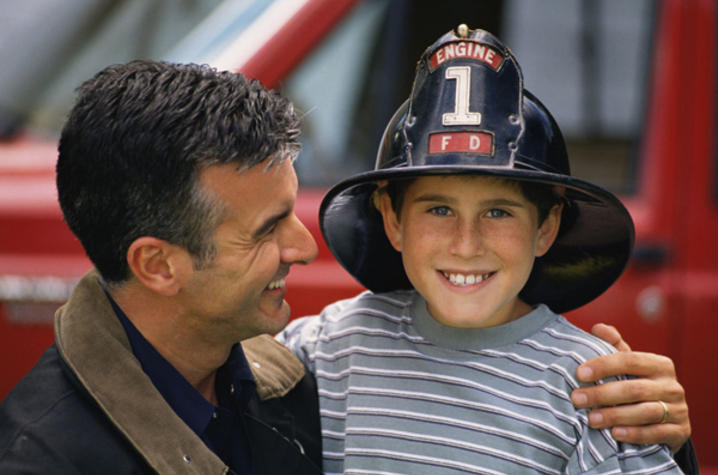Safe Kids Provides Fire Safety Tips

LEXINGTON, Ky. (Oct. 5, 2009) – As the weather starts to turn colder, the risk of fires increases significantly. Nationwide, 412 children ages 14 and under died in 2006 due to unintentional fire and burn-related injuries, and approximately 98,700 more were injured.
“Stay fire smart! Don’t get burned” is the theme for this year’s Fire Prevention Week, which runs from Oct. 4 to 10. Safe Kids is joining the National Fire Protection Association (NFPA) to urge families to focus on burn prevention and awareness, as well as take active measures to help prevent fires in their homes. Approximately 80 percent of all fire-related deaths and injuries occur in the home, and young children are at a particularly high risk because they don’t perceive danger as readily and can lack the ability to escape a life-threatening burn situation.
“A burn can be incredibly painful and it’s especially important for parents to realize what types of injuries are common for their child’s age,” said Sherri Hannan, coordinator for Safe Kids Fayette County. “Thermal burns from contact with a hot surface or a flame cause the greatest number of burns in children. However, children ages 4 and under are hospitalized in burn centers more for scald burns from hot liquids, while children ages 5 to15 are hospitalized more for fire/flame burns.”
Important fire and burn safety tips for parents:
· Set your water heater thermostat to 120 degrees Fahrenheit. Consider installing water faucets and shower heads containing anti-scald technology.
· Keep matches, gasoline, lighters and all other flammable materials locked away and out of children’s reach and teach them never to touch these items.
· Never leave a burning candle unattended. Place candles in a safe location away from combustible materials and where children or pets cannot tip them over.
· Keep children away from cooking and heating appliances, and never leave the kitchen while you are cooking. Use back burners and turn pot handles to the back of the stove when cooking.
· Place space heaters at least 3 feet from curtains, papers, furniture and other flammable materials. Always turn space heaters off when leaving the room or going to bed.
· Install smoke alarms on every level of the home, outside every sleeping area, and in each bedroom. Test them every month and change the batteries once a year, even if they are hard-wired. Smoke alarms are also available with 10-year lithium batteries.
· Consider a home sprinkler system. The combination of smoke alarms and sprinklers can reduce your chances of dying in a fire by 82 percent.
“In an average lifetime, one in 10 households will have a person injured in a fire,” said Hannan. “To prepare for an emergency, parents should plan several escape routes out of their home and then designate a safe place to meet. Then practice with your kids so they know exactly what to do. Also, teach children never to go back into a burning building, and to call the fire department from a neighbor’s home or a cell phone outside.”
NFPA has organized National Fire Prevention Week annually since 1922. For more details, go to www.firepreventionweek.org. For more information about fire safety for children and families, as well as helpful tips and videos, call (859) 323-1153 or go to www.usa.safekids.org/fire/.
Safe Kids Fayette County works to prevent accidental childhood injury, the leading killer of children 14 and under. Its members include health and safety experts, educators, community leaders, corporations, foundations, government representatives and volunteers to educate and protect families. Safe Kids Fayette County is a member of Safe Kids Worldwide, a global network of organizations dedicated to preventing accidental injury. Safe Kids Fayette County was founded in 1994 and is led by Kentucky Children's Hospital.




